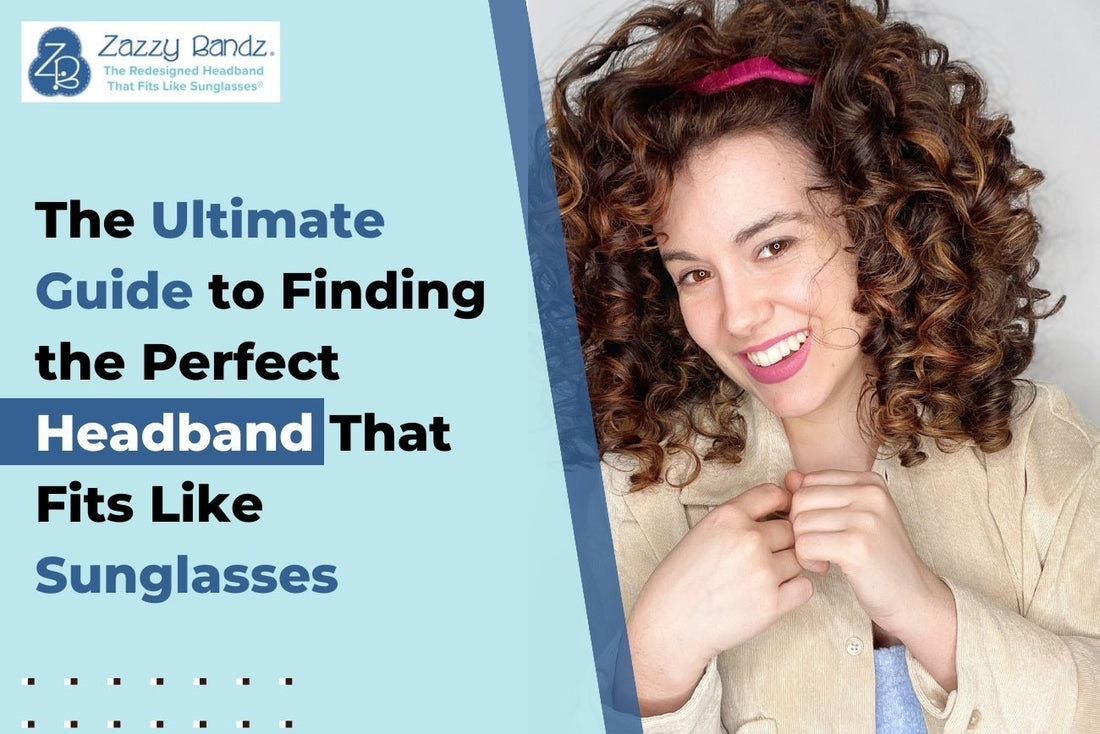Headbands are no longer just useful; they're now a fashion statement that serves two purposes. Finding the right headband means thinking about style, comfort, and function, like finding the right pair of sunglasses that fit well. This complete guide will help you sort through the many headbands to find the one that fits your favorite sunglasses.
1. Know The Different Types Of Headbands:
Headbands come in many styles, sizes, and materials. Knowing the different kinds, you can narrow your choices based on your wants and preferences. Shimmer, ruffle, solid color, and floral headbands are the most common. Each one is used for different aspects, from fashion statements to workout items.
2: Choose Your Style:
There are many different types of headbands, from bohemian chic to sleek and modern, making them a versatile accessory for various fashion preferences. Think about your style and how you'd like to wear a headpiece with your outfit, especially if you're into trendy headbands. Figuring out your style will help you pick the right headband, whether you like simple, classic designs or big, bold ones, ensuring your accessory choice complements your overall look.
3. Picking the Right Material:
The material of a headband has a big effect on how comfortable and useful it is. Cotton, satin, leather, and elastic are all common materials. Satin adds a touch of class, while cotton lets air flow and is good for everyday wear. Headbands made of faux leather can give you a more edgy look, and bands made from solid material are great for sports and busy wear. When choosing the material, consider the event and how comfortable it is.
4. Making Sure The Fit Is Right:
A headband, much like sunglasses, should fit firmly without being uncomfortable, ensuring it stays in place during various activities. To achieve a good fit without being too tight, look for headbands with comfortable cloth, straps, or grips that you can change. This consideration is crucial, particularly if you have curly hair, as a well-fitted headband, such as a Curly hair headband, can provide both comfort and usefulness, especially when engaging in physical activities. Prioritizing the right fit ensures that the headband stays secure without causing discomfort, making it an essential accessory for those with specific hair textures like curly hair.
5. Taking Width And Thickness Into Account:
The width and thickness of a headband affect how it looks and how well it works. A thin headband is understated and can be worn with many things, while a bigger band makes a strong statement. Some people find thicker headbands better to keep their hair in place, while smaller ones look more delicate. Pick the width and thickness that match your hair type and style.

6. Taking a Look at Versatility:
Choose a headband that can be worn in a variety of ways. Some headbands can be worn in different ways, like as a normal headband, around a ponytail, or in a bold way across the face. Being versatile makes your buy more valuable because it lets you use one accessory to create different looks.
7. Think About The Type And Texture Of Your Hair:
Finding the right headband depends a lot on the type and structure of your hair. If your hair is thick and curly, choose a bigger and better hair accessory for a Curly hair headband that will fit better and give you more support. For a softer touch, people with fine hair may like smaller bands. Knowing what kind of hair you have will help the headband look good and work well.
8. Picking the Right Patterns and Colors:
The design and color of your headband can make your outfit look better together. Think about the colors you already wear and pick headbands that match or add a pop of color that stands out. You can show yourself through patterns, from simple stripes to bright flowers. Try out various colors and patterns until you find the ones that go well with your style.
9. Seeing How Comfortable It Is:
When choosing a headband, comfort is very important, especially if you're exploring trendy headbands. For example, when you try shades, you should test the headband to ensure it doesn't give you headaches or make you feel bad after wearing it for a long time. For a good fit, look for padded choices made of soft materials or features that can be adjusted, keeping in mind the current trends in headband fashion. Remember that the right headband should make you look better without feeling worse, so selecting a trendy yet comfortable option is key to enhancing your overall style.
10. Looking Into Specialized Headbands:
Look into specialized options for particular needs, like workout headbands or ones for certain hair types. Athletic square headbands often have features that wick away sweat, and headbands for wavy hair may be made to keep it from breaking and frizzing. Finding a headband that fits your needs will give you style and purpose.
11. Making Sure There Are No Allergies:
Some people may be sensitive to or allergic to certain materials. Before buying, read the product description to find out what materials were used to make the headband. Choosing safe or natural materials is best if you know you have allergies.
12. Book Reviews And Suggestions For Reading:
Before you buy sunglasses, you should read reviews. The same goes for headbands. Online reviews tell you about other buyers' experiences with comfort, durability, and general satisfaction. You could also ask your friends, family, or fashion bloggers for suggestions. They may already have found the right headband.
Conclusion
You need to think about style, comfort, and function to find the best headband that fits like sunglasses by Zazzy Bandz. By knowing what you like, trying out different styles and materials, and thinking about how well it fits and how versatile it is, you can be sure to find a headband that looks good on you and gives you the support and comfort you need.

